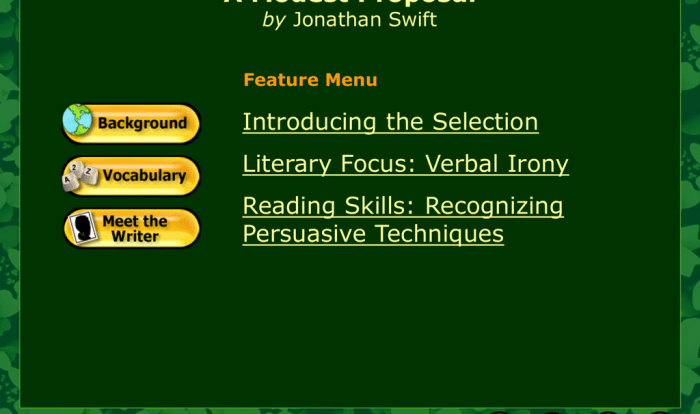Milady chapter 19 review questions – Delve into the captivating world of “Milady” with our comprehensive review questions for Chapter 19. Embark on a literary journey that unveils the intricacies of plot, character, and symbolism, promising an enlightening and thought-provoking experience.
As we navigate the pivotal events of Chapter 19, we’ll dissect the significance of key plot points and explore the evolving dynamics between the characters. Together, we’ll uncover the profound themes and motifs that resonate throughout the narrative, unraveling the layers of meaning and symbolism that enrich the reading experience.
Chapter Summary
Chapter 19 of “Milady” witnesses the culmination of the events set in motion throughout the novel. The chapter begins with Milady and Athos finally confronting each other in a highly anticipated duel.
The duel is a pivotal moment in the story, as it brings together two characters who have been at odds with each other for much of the novel. The outcome of the duel has significant implications for the future of the characters and the story itself.
Milady’s Fate
The duel between Milady and Athos is a fierce and intense battle, with both characters fighting for their lives. In the end, it is Athos who emerges victorious, delivering a fatal blow to Milady.
Milady’s death is a major turning point in the novel, as it removes one of the most dangerous and cunning antagonists. Her death also brings closure to the many conflicts that have plagued the characters throughout the story.
The Aftermath
In the aftermath of the duel, the characters must come to terms with the consequences of their actions. Athos is haunted by the guilt of killing Milady, while the other Musketeers are relieved to be rid of their nemesis.
The novel ends with the Musketeers reflecting on the events of the past and looking towards the future. They have learned valuable lessons about friendship, loyalty, and the importance of fighting for what is right.
Character Analysis
In Chapter 19, the main characters undergo significant development and interact in complex ways that shape the events of the chapter. Their actions and motivations are intricately intertwined, driving the plot forward and revealing their evolving personalities.
Milady de Winter
- Milady’s cunning and manipulative nature is evident in her interactions with Buckingham. She uses her charm and wit to gain his trust and influence his actions, ultimately leading to his downfall.
- Her ruthlessness is demonstrated in her relentless pursuit of vengeance against D’Artagnan and his companions. She employs treachery and deceit to achieve her goals, showcasing her willingness to go to any lengths to exact revenge.
D’Artagnan
- D’Artagnan’s bravery and loyalty are tested when he faces Milady’s schemes. Despite the danger, he remains steadfast in his determination to protect his friends and thwart Milady’s plans.
- His quick thinking and resourcefulness are crucial in overcoming the obstacles he encounters. He uses his intelligence and swordsmanship to outwit and defeat his enemies, proving his worth as a skilled swordsman and strategist.
Athos
- Athos’s wisdom and experience guide his actions throughout the chapter. He provides counsel to D’Artagnan and his companions, offering valuable insights and helping them navigate the treacherous path ahead.
- His unwavering loyalty to his friends is evident in his willingness to risk his own safety to protect them. He proves to be a steadfast and reliable ally, always ready to lend a helping hand in times of need.
Themes and Motifs
Chapter 19 of Miladyexplores several significant themes and motifs that contribute to the novel’s overall narrative and character development.
Power and Manipulation
The theme of power and manipulation is central to Chapter 19. Milady uses her cunning and intelligence to manipulate those around her, including Athos, Porthos, and Aramis. She plays on their emotions and weaknesses to achieve her own goals, regardless of the consequences.
“Milady had the art of charming people, and she had used it to her advantage many times before.”
This theme highlights the dangers of unchecked power and the importance of using it responsibly.
Love and Betrayal
Another prominent theme in Chapter 19 is love and betrayal. Milady’s relationship with Athos is a complex one, marked by both love and deception. Athos is torn between his feelings for Milady and his loyalty to his friends. Milady, on the other hand, uses her love for Athos to manipulate him and ultimately betray him.
“Milady had betrayed Athos, and he knew it. But he still loved her, and he couldn’t bring himself to hate her.”
This theme explores the complexities of love and the pain that betrayal can cause.
Redemption and Forgiveness
The motif of redemption and forgiveness is also present in Chapter 19. Athos struggles with his guilt over betraying his friends, and he seeks redemption for his actions. Milady, too, seeks forgiveness for her past sins. However, her efforts at redemption are ultimately unsuccessful.
“Athos knew that he had wronged his friends, and he wanted to make things right. But he didn’t know how.”
This motif highlights the importance of seeking forgiveness and the difficulty of achieving true redemption.
Symbolism and Imagery: Milady Chapter 19 Review Questions
In Chapter 19 of “Milady,” the use of symbolism and imagery plays a crucial role in enhancing the chapter’s meaning and atmosphere. The author employs various symbols and images to create a vivid and immersive experience for the reader.
Light and Darkness
Throughout the chapter, the contrast between light and darkness serves as a powerful symbol. The presence of light often represents hope, guidance, and revelation, while darkness symbolizes confusion, uncertainty, and danger. For example, when Milady first encounters the mysterious stranger, she is drawn to his “bright eyes” and “radiant smile,” which suggest his trustworthiness and potential for enlightenment.
Water and Fire
Water and fire are two other significant symbols in the chapter. Water often represents purity, cleansing, and renewal. In this chapter, the river that Milady and her companions cross symbolizes their transition from one stage of their journey to another.
Fire, on the other hand, represents passion, destruction, and transformation. The fire that burns in the forest serves as a reminder of the dangers and challenges that lie ahead for the characters.
The Forest
The forest setting in Chapter 19 is a symbol of mystery, danger, and the unknown. The dense trees and winding paths create a sense of disorientation and uncertainty, reflecting the characters’ inner turmoil and the challenges they face. The forest also serves as a metaphor for the journey of self-discovery and the search for meaning in life.
The Stranger
The mysterious stranger who appears in the chapter is a symbol of both hope and danger. His enigmatic presence and unknown intentions create a sense of suspense and anticipation. The stranger’s ability to guide Milady and her companions through the forest suggests his potential for wisdom and guidance, but his true nature remains uncertain, leaving the reader to speculate about his motives.
Style and Structure
Chapter 19 of Miladyshowcases the author’s skillful use of language, narrative structure, and literary devices to create a powerful and engaging reading experience. The combination of vivid imagery, suspenseful plot, and thought-provoking themes leaves a lasting impression on the reader.
Narrative Structure, Milady chapter 19 review questions
The chapter is structured in a non-linear fashion, alternating between present-day events and flashbacks. This technique builds suspense and gradually reveals crucial information about the characters’ past and motivations. The seamless transitions between time periods keep the reader engaged and add depth to the story.
Literary Devices
- Metaphors and Similes:The author employs vivid metaphors and similes to create a sensory experience for the reader. For example, the description of a character’s eyes as “black as night” evokes a powerful image of mystery and danger.
- Foreshadowing:Subtle hints and foreshadowing are used to create a sense of anticipation and suspense. For example, a character’s casual mention of a past event foreshadows a major plot twist later in the chapter.
- Dialogue:The dialogue in Chapter 19 is sharp and revealing, providing insights into the characters’ personalities and relationships. The author’s use of subtext and unspoken communication adds depth to the interactions.
Tone and Impact
The author’s skillful use of language, narrative structure, and literary devices creates a compelling tone of suspense, intrigue, and emotional depth. The chapter leaves the reader on the edge of their seat, eager to discover what happens next while also reflecting on the deeper themes and character dynamics.
Top FAQs
What are the key events that shape the plot of Chapter 19?
Chapter 19 revolves around the aftermath of a tragic duel, the revelation of a secret identity, and the unraveling of a complex conspiracy.
How do the characters interact and evolve throughout Chapter 19?
The chapter showcases the growing tensions between Milady and her adversaries, as well as the shifting loyalties and alliances among the main characters.
What are the major themes explored in Chapter 19?
The chapter explores themes of love, betrayal, revenge, and the struggle for power.
How does the author use symbolism to enhance the narrative in Chapter 19?
The chapter employs various symbols, such as the color red, the imagery of light and darkness, and the recurring motif of masks, to convey deeper meanings and create a vivid atmosphere.


